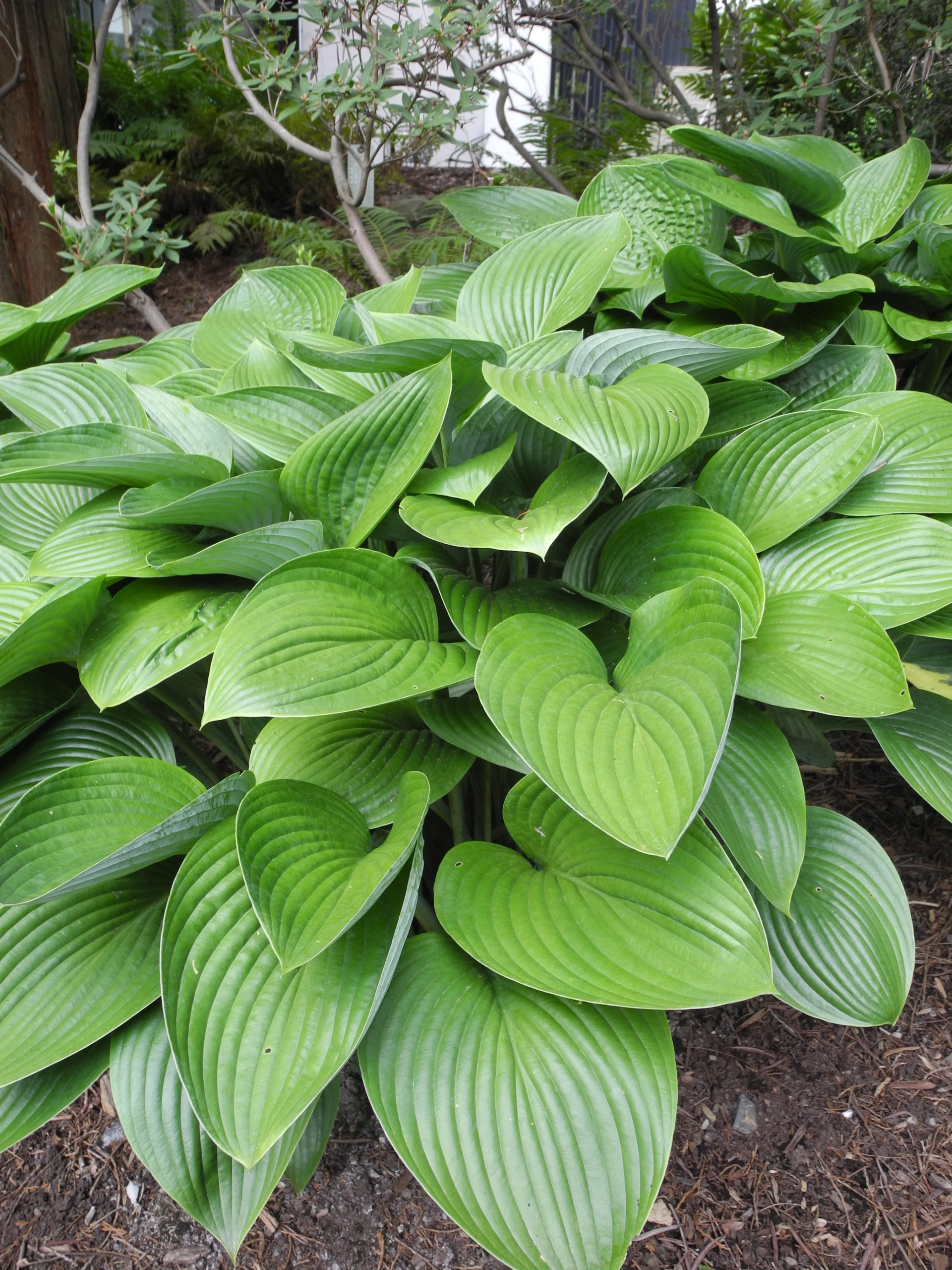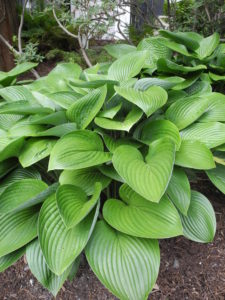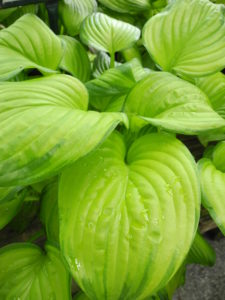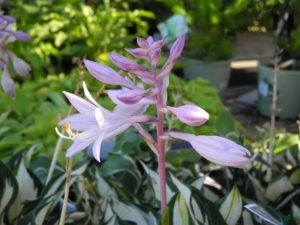
Hosta la Vista!
You can call them funkia, plantain lily, or hosta; but the common name and Latin name is the same – Hosta. Long regarded as the almost ‘perfect’ perennial plant, hostas are native to Korea, China & Japan, and were introduced to American gardens via Europe in the mid 1800’s.

There are so many varieties of hosta to fall in love with: small plants to large plants with small or large leaves (with everything in between!); solids, patterned, or variegated leaves. Flowering spikes in shades of purple to pure white, and some with fragrance. Undoubtedly, there is a hosta for every garden or landscape setting.

Hostas can have a shady side to their personality – they do enjoy shade, especially during the long, sunny days of summer. Some gardeners, commercial growers, and hosta aficionados agree that, if given ample moisture, some varieties of hostas will grow in full sun locations. Hostas do quite well as a groundcover under trees, or in rock gardens, or landscape beds and borders with morning sun, followed by afternoon shade.

Planting: Dig the hole twice as wide, but no deeper. Remove the container, then tease out the roots and set in the planting hole at the same height it was growing in in the pot. It is best to amend heavy soils with compost or composted manure prior to planting. As with all new plantings, water regularly.
Maintenance: Little, if any, maintenance is needed during the growing season. If you want, remove spent flowering spikes. After a killing frost, cut back and dispose of leaves. Fertilize in early spring when new growth appears. Too much of a good thing? Divide hostas in early spring or late fall.
A few words of warning: Beware of slugs and deer as they, too, are passionate about hosta!
